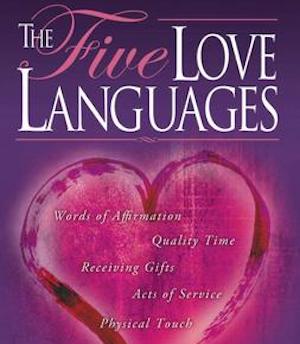Over 12 million copies sold. A New York Times bestseller for 10 years running. The Five Love Languages is one of the best books on marital love you can read and learn from.
Falling in love is easy. Staying in love – that’s the challenge. You may express affection to your significant other regularly, but do you truly take the time to make sure you’re communicating it the way your partner wants to receive it?
Even love can sometimes get lost in translation when two partners speak different love languages. How can you keep your relationship fresh and growing amid the demands, conflicts, and just plain boredom of everyday life?
Whether your relationship is flourishing or failing, Dr. Gary Chapman’s proven approach to showing and receiving love will help you experience deeper and richer levels of intimacy with your partner, starting today.
In this #1 New York Times international bestseller, you’ll discover the secret that has transformed millions of relationships worldwide. The five love languages are five different ways of expressing and receiving love:
- Words of affirmation
- Quality time
- Receiving gifts
- Acts of service
- Physical touch
We all may relate to most of these languages, but each of us has one love language that speaks to us the most. Not everyone communicates love in the same way, and likewise, people have different ways they prefer to receive love. Your way of showing love, while it may be sincere, may not be what your partner actually wants.
People who like words of affirmation as a love language value verbal acknowledgments of affection, including saying “I love you” frequently, compliments, words of appreciation, verbal encouragement and frequent texts or social media engagement. People whose love language is quality time feel the most adored when their partner actively wants to spend time with them and is always down to hang out.
If your love language is acts of service, you are happiest when your partner goes out of their way to make your life easier. It’s things like bringing you soup when you’re sick, making your coffee for you in the morning, or picking up your dry cleaning for you when you’ve had a busy day at work.
People whose love language is receiving gifts enjoy being gifted something that is both physical and meaningful. They feel loved when people give them “visual symbols of love”. It is not about the monetary value, but the symbolic thought behind the item. Such people recognise and value the gift-giving process: the careful reflection, the deliberate choosing of the object to represent the relationship and the emotional benefits from receiving the present.
People with physical touch as their love language feel loved when they receive physical signs of affection, which includes kissing, holding hands, cuddling on the couch and sex. Physical intimacy and touch can be incredibly affirming; the roots go back to their childhood – some people only felt deep affection and love by their parents when they were held, kissed, or touched.
How do you show love? What do you complain about in a relationship? What do you request or actively need from your partner on a day-to-day basis? The one with the most statements you resonate with is your primary love language.
The 5 Love Languages is as practical as it is insightful. Updated to reflect the complexities of relationships today, the new edition reveals intrinsic truths and applies relevant, actionable wisdom in ways that work.
It includes the Couple’s Personal Profile assessment so you can discover your love language and that of your loved one. A lovely book.
Rating: 8/10
Christ & Co.













